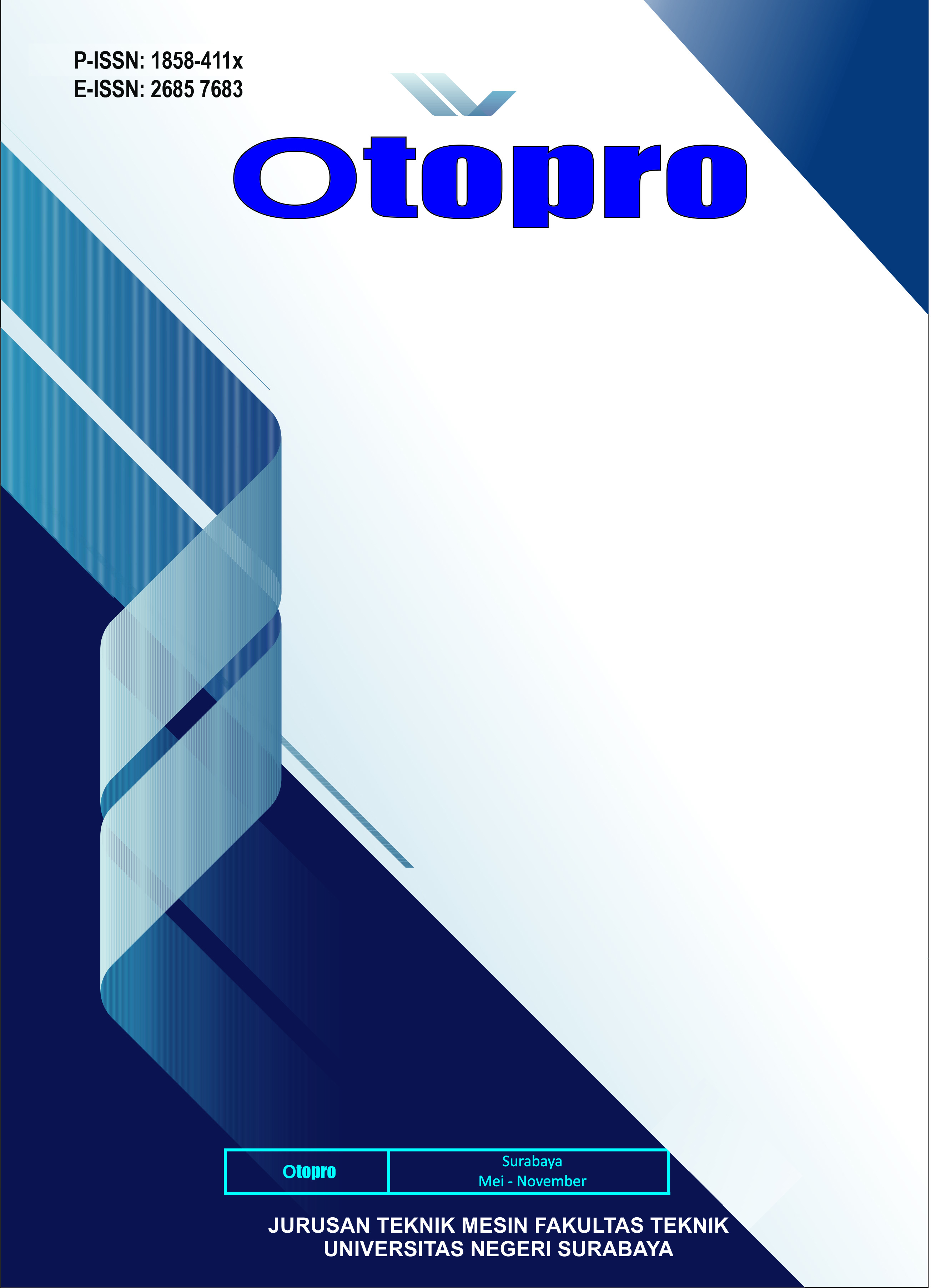RANCANG BANGUN ALAT CETAK KOMPOSIT SAMPAH PLASTIK DENGAN SABUT KELAPA
DOI:
https://doi.org/10.26740/otopro.v17n1.p21-26Keywords:
Printing equipment, Composite, coco fiber, HDPEAbstract
The plastic waste composite molding tool with coconut fiber is designed with the aim of converting HDPE plastic waste, especially drink bottle covers mixed with coconut fiber into a product in the form of a composite board (panel) that is more useful. The dimensions of the mold are 410 x 540 mm, the tool height is 850 mm, the width is 600 mm, the length is 600 mm, the temperature of the installed heating elements is around 200-250 degrees for 12 pieces, 220 V 1000 watts, while the press uses a 10 ton hydraulic jack. While the heating temperature for pressing the composite board is set in the range of 130 – 180 oC. From the results of the first printing press with iron plate material, the resulting product is sticky on the plate surface, the second test is coated with aluminum foil, the resulting product is less than perfect because the surface is uneven. , while the third test was coated with a stainless steel plate, the resulting product was better than the previous results. This research needs to be improved in order to assist the government in handling plastic waste. In addition, the results of products with this tool will help improve people's skills and improve the economy of the products of this tool.
References
Idha Zaitun Nisa Aryani Zulha Penerapan Teknologi Tepat Guna Untuk Peningkatan Pemberdayaan Masyarakat Dan Lingkungan JMM (Jurnal Masyarakat Mandiri) Vol. 2, No. 2: Desember 2018 p-ISSN 2598-8158 & e-ISSN 2614-5758.
Mulinari, D.R., 2011. Mechanical Properties of Coconut Fiber Reinforced Polyester Composites. J.Engineering Procedia (Elsevier) 10 : 2074 - 2079.
Romels C. A. Lumintang .,(2011) Komposit Hibrid Polyester Berpenguat Serbuk Batang dan Serat Sabut Kelapa., Jurnal Rekayasa Mesin Vol.2, No. 2 Tahun 2011 : 145-153 ISSN 0216-468X
Suhasman, Astuti Arif (2007) The Resistance of Composite Boards Made from Sengon Wood Waste and Carton on Drywood Termite and Subterranean Termite . Jurnal Perennial, 4(1) : 28-35.
O. Kehinde, O.J. Ramonu , K.O. Babaremu, L.D. Justin, Plastic wastes: environmental hazard and instrument for wealth creation in Nigeria. https://www.cell.com/action/showPdf?pii=S2405-8440%2820%2931974-5
ASTM, https://allcivilstandard.com/astm-d-5201-03a-pdf-free-download/
Farid Mulana, Hisbullah, Iskandar, Pembuatan Papan Komposit Dari Plastik Daur Ulang dan Serbuk Kayu serta Jerami Sebagai Filler, Jurnal Rekayasa Kimia dan Lingkungan Vol. 8, No. 1, hal. 17-22, 2011 ISSN 1412-5064
Rizal Hanafi dkk RANCANG BANGUN MESIN HOTPRESS UNTUK PEMBUATAN PAPAN KOMPOSIT BERBASIS LIMBAH SEKAM PADI DAN PLASIK HDPE, Journal of Infrastructure & science Engineering, Volume 2 No 1 April 2019 PISSN: 2615-6962, E-ISSN: 2614-4638.

Downloads
Published
How to Cite
Issue
Section
License

This work is licensed under a Creative Commons Attribution-NonCommercial 4.0 International License.
 Abstract views: 642
,
Abstract views: 642
, PDF Downloads: 888
PDF Downloads: 888


3.png)










